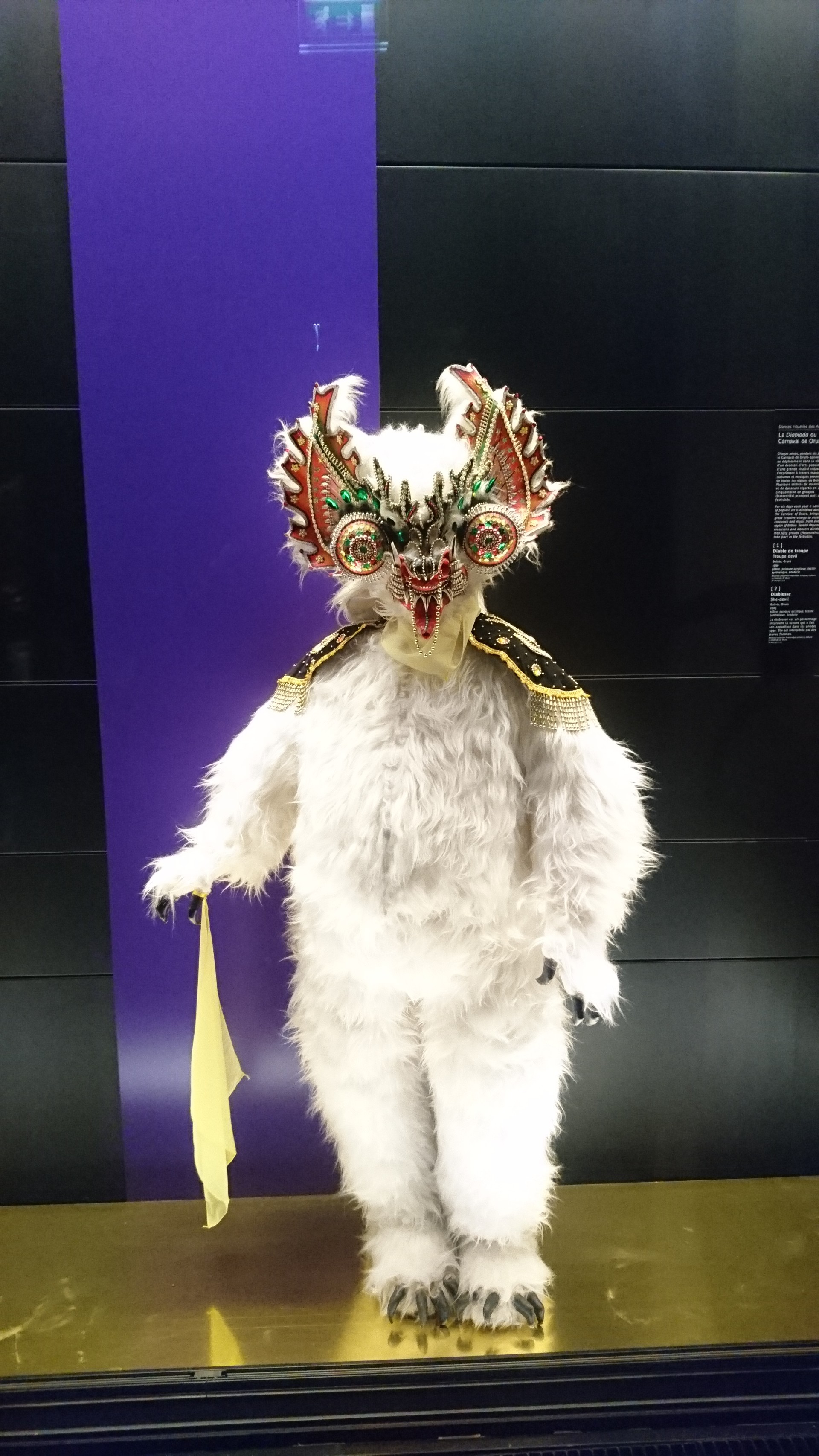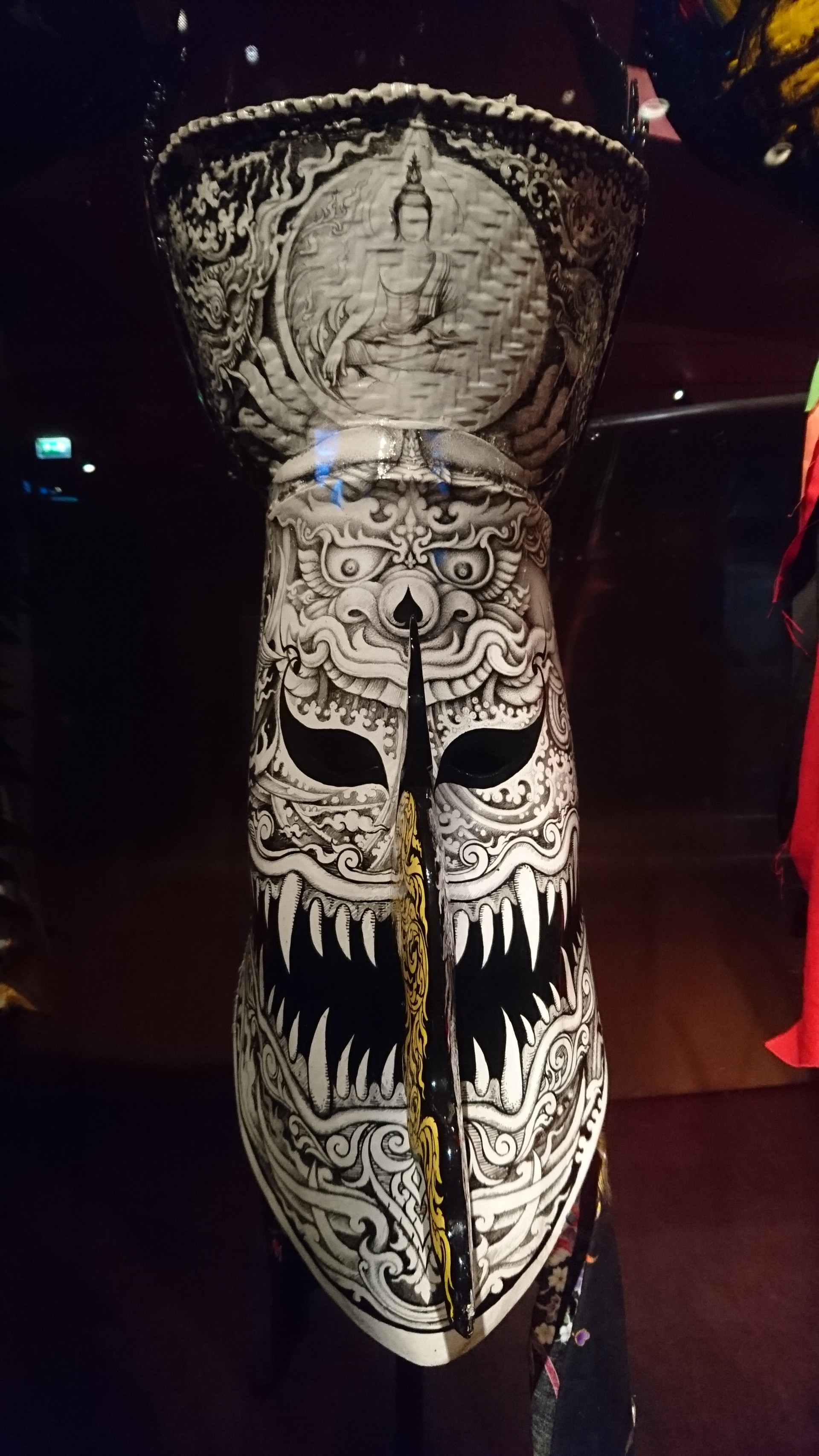Quai Branly Museum is a modern museum that displays artefacts made by indigenous people of Asia, Oceania, Africa, and America. Every time I went there, the exhibitions were different, but they all looked interesting. Maybe you are not interested in any of those cultures at all, but you can still find something fascinating here because there's so large a collection of artefacts that some of them surely suit your taste.
Now let me show you some pictures taken in this museum.

Look at the fluffy monster above. It actually is something that some Latin American people wear during the carnival and is a combination of indigenous culture and western culture.

What do you think this object is? It looks like a shell, huh? In fact, it's a shield made by African people. Not sure if it's strong enough.

Above are three Persian ornaments made of metal. Can you guess what fruits they represent? I'm sure you can quickly figure out that the left one and the bottom one are apples and that the one on the right is a pomegranate.

Obviously this is a mask, but do you know where it is from? It's from Thailand. At first glance, it looked scary to me, because I saw the teeth. But then I noticed that there's a drawing of a buddha on the top, which gives the mask a peaceful feel.

What are these wooden sticks? Definitely weapons! They are clubs made by indigenous Oceanians.

Oh, the goblets have real feet, the birds' feet! But don't worry, these feet are made of wood, not taken from birds. Lacquer is all over their surfaces so that they don't get rotten. They were made by a minority ethnic group in southern China.

At last, let me show you a photo of the garden of Quai Branly Museum. The garden is full of stick-like lights, which are on in the evening.
I also have many other interesting photos of the exhibits in the museum, but I'm not gonna upload all of them here. If you are interested in this museum, you'd better explore it yourself!
Tips: On the first Sunday of each month, Quai Branly Museum is free of charge; it's open until7pm, so you'll have enough time to explore it if you arrive early in the afternoon; depending on the specific exhibition, it may take one to two hours to finish your visit; the museum is closed on Mondays.
